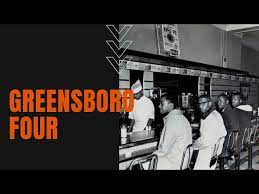Introduction
The Greensboro Four, consisting of four African American college students, courageously challenged racial segregation in the United States by staging a sit-in at a Woolworth’s lunch counter in Greensboro, North Carolina. Their actions on February 1, 1960, inspired a wave of similar protests across the country, turning the tide against segregation and eventually leading to the passage of the Civil Rights Act of 1964.
The Greensboro Four
Ezell Blair Jr., Franklin McCain, Joseph McNeil, and David Richmond were freshmen at North Carolina Agricultural and Technical State University when they decided to take a stand against racial inequality. Frustrated by the pervasive segregation that still existed despite the Supreme Court’s ruling that separate public facilities for black and white citizens were inherently unequal, the group of friends sought to make a difference in their own community.
The Sit-In
On February 1, 1960, the four young men entered the Woolworth’s store in downtown Greensboro and purchased several items. They then approached the whites-only lunch counter with their receipts as evidence that they were paying customers. When they asked to be served coffee and donuts, they were denied service based on their race. Rather than leaving the store in humiliation or resorting to violence, Blair, McCain, McNeil, and Richmond decided to stay seated at the counter until they were served.
Impact and Expansion
News surrounding the nonviolent protest quickly spread through local media outlets. Fed up with being treated as second-class citizens, other students from predominantly black colleges joined the Greensboro Four in their sit-in at Woolworth’s over subsequent days. As word spread across the South, similar demonstrations erupted in cities like Nashville, Montgomery, and Jackson.
One significant outcome of these protests was the formation of the Student Nonviolent Coordinating Committee (SNCC) in April 1960. The SNCC became a driving force behind the civil rights movement, organizing nonviolent direct action protests that put pressure on political leaders to enact change.
Civil Rights Act of 1964
The courageous actions of activists like the Greensboro Four contributed to an environment that prompted legislators to pass the Civil Rights Act of 1964. This landmark legislation outlawed discrimination based on race, color, religion, sex, or national origin. It also prohibited the segregation of public facilities, including schools, workplaces, and public transport. The Greensboro sit-in effectively marked a turning point in American history and significantly furthered the cause of civil rights.
Conclusion
The Greensboro Four were not only a primary assembly of young men fighting against racial segregation; they were catalysts for a movement that would reshape America. By sitting down at a lunch counter, they stood up against injustice and played an essential role in changing the course of history. Their story is a testament to the power of peaceful protest and collective action in the struggle for social change.





